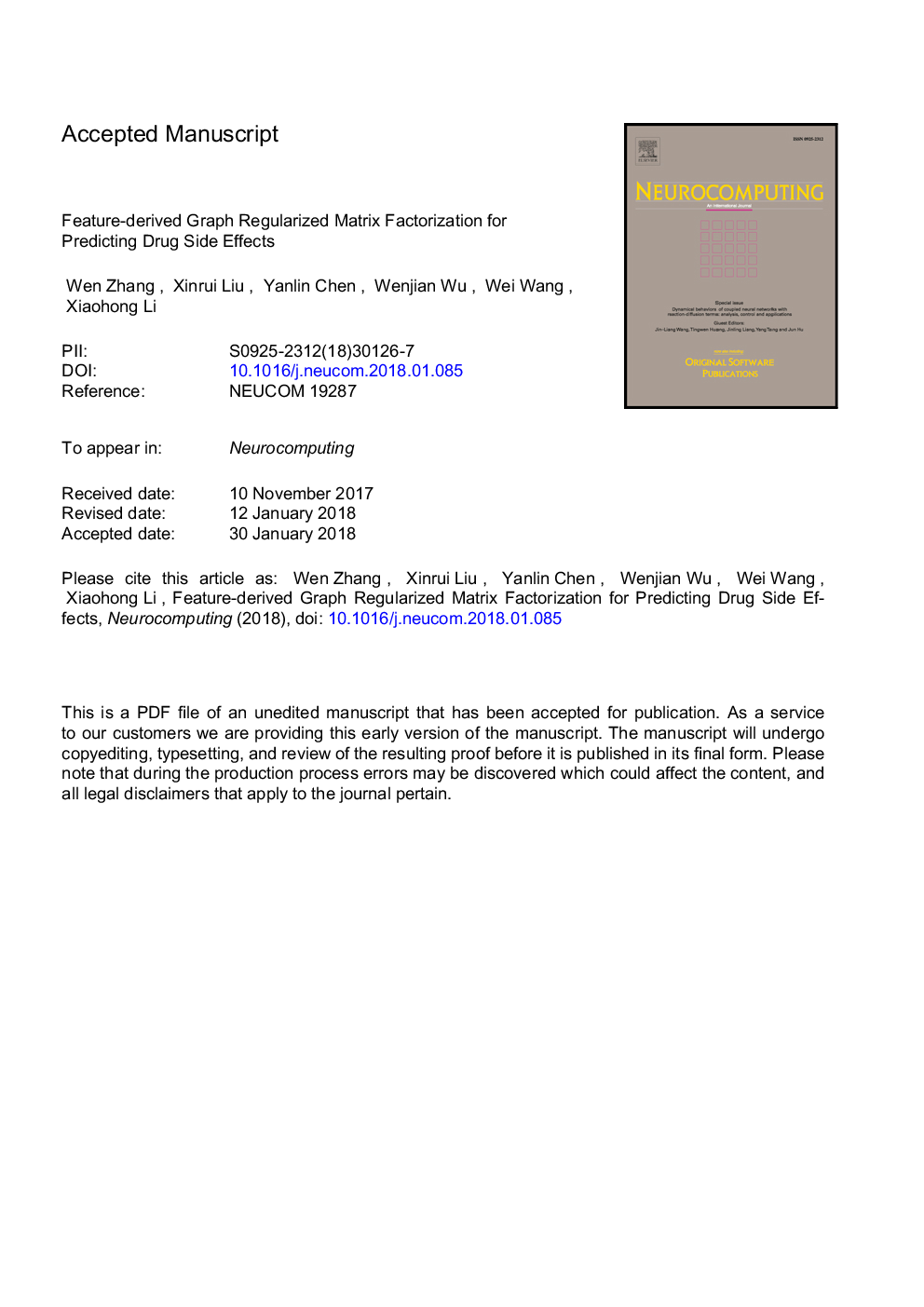| Article ID | Journal | Published Year | Pages | File Type |
|---|---|---|---|---|
| 6864379 | Neurocomputing | 2018 | 21 Pages |
Abstract
Drug side effects are one of the major concerns in the drug discovery. A great number of machine learning-based computational methods have been proposed to predict drug side effects. Many methods combine diverse drug features for the side effect prediction, but complete features are not available for all drugs. Drug side effect prediction with limited information is challenging and meaningful. In this paper, we propose a novel computational method “feature-derived graph regularized matrix factorization” (FGRMF), which predicts unobserved side effects for approved drugs based on known drug-side effect associations and available drug features. FGRMF projects the drug-side effect association relationship into the low-dimensional space, which uncovers the latent features of drugs and side effects. A graph is constructed based on individual drug features, and the graph regularization which preserves the structure of the drug graph is incorporated into FGRMF. FGRMF is different from the traditional matrix factorization technique, and can take the biomedical context into account. In the computational experiments, FGRMF can produce satisfying results, and outperforms benchmark side effect prediction methods on the benchmark datasets. When complete features are available, we can extend FGRMF to integrate diverse features. We develop a web server to facilitate drug side effect prediction, available at http://www.bioinfotech.cn/FGRMF/.
Related Topics
Physical Sciences and Engineering
Computer Science
Artificial Intelligence
Authors
Wen Zhang, Xinrui Liu, Yanlin Chen, Wenjian Wu, Wei Wang, Xiaohong Li,
